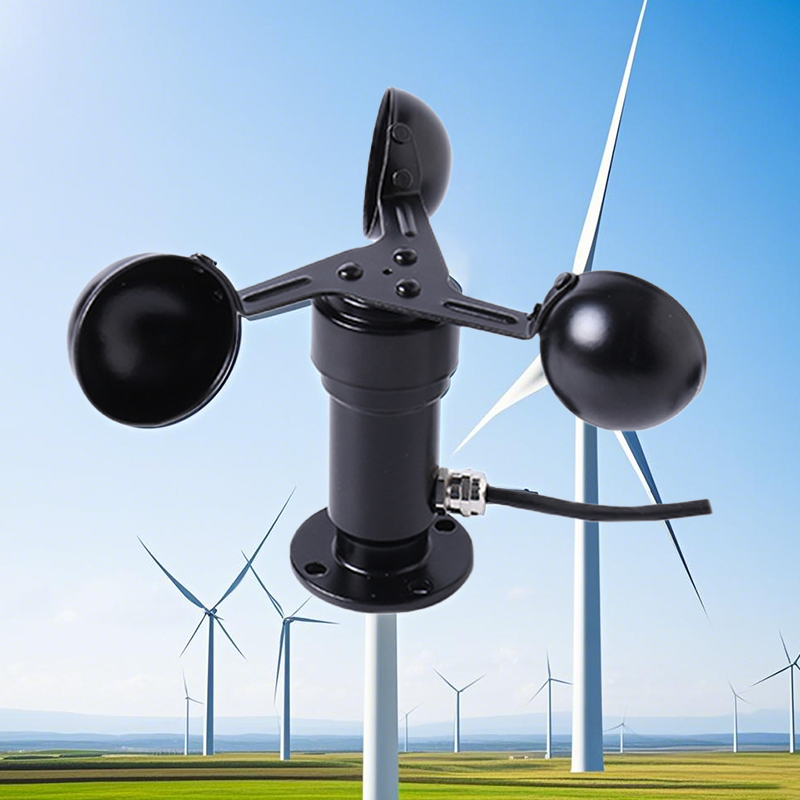From wind farms in Northern Europe to disaster prevention and early warning systems in Japan, from scientific research laboratories in the United States to urban planning in China, anemometers, seemingly basic meteorological monitoring equipment, are playing an increasingly important role worldwide. With the vigorous development of the wind energy industry and the increase of extreme weather events, precise wind speed monitoring has become an indispensable technical support in multiple fields.
Denmark: The “Smart Eye” for Wind Farm Optimization
In Denmark, where wind power accounts for more than 50%, anemometers have become standard equipment in every wind farm. The Horns Rev 3 offshore wind farm located in the North Sea has installed dozens of lidar anemometers. These devices not only measure wind speed and direction but also precisely assess wind energy resources through vertical profile monitoring.
“Through precise wind speed prediction, the accuracy of our power generation prediction has increased by 25%,” said Anderson, the operation manager of the wind farm. “This helps us better participate in electricity market transactions and increase our annual revenue by approximately 1.2 million euros.”
The United States: The lifeline of tornado warnings
In the “Tornado Corridor” of the Midwestern United States, Doppler radar and a network of ground anemometers jointly form a strict monitoring system. Meteorologists in Oklahoma were able to issue tornado warnings 20 minutes in advance by using these data.
“Every minute of early warning can save lives,” said the head of the state’s emergency management department. “Last year, our early warning system helped prevent hundreds of casualties.”
Japan: The vanguard in typhoon defense
Facing the frequent threat of typhoons, Japan has deployed a high-density anemometer network in coastal areas. In Okinawa Prefecture, anemometer data is directly connected to the disaster prevention and early warning system. When the wind speed exceeds the set threshold, an emergency response is automatically triggered.
“We have set up a three-level early warning mechanism,” the county disaster prevention official introduced. “When the wind speed reaches 20 meters per second, we will be reminded to pay attention; when it reaches 25 meters per second, we will suggest taking refuge; and when it reaches 30 meters per second, we will force evacuation.” This system played a key role when Typhoon Nammadol passed through last year.
China: A powerful tool for urban Wind environment management
In many major cities in China, anemometers are helping to solve the problem of “urban wind corridors”. In the planning of Qianhai New Area, Shenzhen has utilized a distributed anemometer network to analyze the urban ventilation efficiency and optimize the building layout.
“Data shows that by optimizing the spacing and orientation of buildings, the wind speed in the area has increased by 15%,” said an expert from the urban planning department. “This has effectively improved air quality and thermal comfort.”
Brazil: A Booster for the Rise of Wind power
As the country with the fastest development of wind power in South America, Brazil has established a complete wind energy monitoring network in the northeastern region. The wind farms in Bahia State monitor the wind energy resources in remote areas in real time through satellite-transmitted anemometers.
“These data helped us determine the best location for the wind turbines,” said the project development manager, “increasing the project’s power generation efficiency by 18%.”
Technological innovation promotes the deepening of application
Modern anemometers have evolved from traditional mechanical types to advanced technologies such as ultrasonic and liDAR. At a research institution in Norway, researchers are testing the next-generation phased array radar anemometer, which can simultaneously monitor the wind field structure in three-dimensional space within a range of several kilometers.
“The new technology has raised the accuracy of wind speed measurement to a new level,” said the project’s chief scientist. “This is of great significance for wind power generation, aviation safety and weather prediction.”
Emerging markets: Africa’s potential
In Kenya, anemometers are helping to develop the largest wind power project in East Africa. The Lake Turkana wind power base has precisely assessed the wind energy potential of this area by using mobile wind measurement towers.
“Data shows that the average annual wind speed in this area reaches 11 meters per second, making it one of the best wind energy resource regions in the world,” said the project leader. “This has changed Kenya’s energy structure.”
Future Outlook
With the development of Internet of Things and artificial intelligence technologies, anemometers are evolving towards intelligence and networking. Experts predict that in the next five years, the global anemometer market will grow at an average annual rate of 12%, and the new generation of devices will have self-diagnostic, self-calibration and edge computing capabilities.
“honde Technology’s R&D director disclosed, ‘We are developing smart anemometers that can learn independently. They can not only measure wind speed but also predict the trend of wind field changes.’”
From energy development to disaster prevention and mitigation, from urban planning to agricultural production, the anemometer, this fundamental and crucial device, is quietly safeguarding human production and life on a global scale, providing solid data support for sustainable development.
For more sensor information, please contact Honde Technology Co., LTD.
WhatsApp: +86-15210548582
Email: info@hondetech.com
Company website: www.hondetechco.com
Post time: Oct-24-2025


